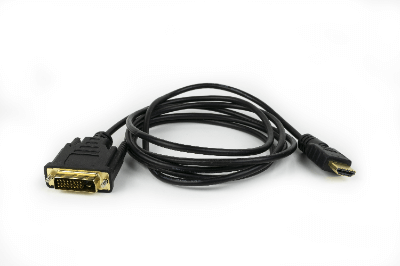What Is an Adapter Cable?
 Adapter cables are designed to transfer signals from input/output terminals for video, audio, data, etc., and connect them to other devices.
Adapter cables are designed to transfer signals from input/output terminals for video, audio, data, etc., and connect them to other devices.
There are three types of adapter cables: one that converts only the connector type between transmitting and receiving devices, another that changes the content of the signals themselves, and a third that combines both functions.
Adapter cables function similarly to conversion connectors, which only convert signals or physical connectors, but include a cable to connect devices that are separated from each other.
Uses of Adapter Cables
Commonly used adapter cables include those with HDMI terminals for transmitting video, audio, and control signals, and USB terminals for data transfer when connected to PCs or peripheral devices. Adapter cables may be used between devices with different terminal shapes, such as HDMI terminals.
In addition to the above, adapter cables are also available for converting between different signal formats. These cables often bridge signals between devices with VGA or RCA terminals for analog video, DVI terminals for digital video, and DisplayPort terminals for digital video and audio. Adapter cables are available for configurations like HDMI to VGA, RCA, DVI, and DisplayPort.
In the case of USB terminals, which like HDMI have multiple shapes, adapter cables are used to convert the shapes of these terminals.
Principle of Adapter Cables
An overview of the HDMI and USB technical standards on which their respective adapter cables are based follows.
HDMI is a digital consumer electronics interface standard that transmits video, audio, and control signals, including device authentication, over a single cable. HDMI has various connector configurations and standards, classified from Type A to Type E. Type A, with 19 pins, is the standard size used in PCs, notebooks, and BD players.
Type C, or mini HDMI, also with 19 pins, is used in cameras and digital video cameras. Types D (micro-HDMI) and E (for in-vehicle equipment) are also available.
Similarly, USB has multiple standards. Type A is the standard size for PCs and notebooks. Type B, larger and almost square, is used in printers and scanners. Type C, reversible and increasingly used in smartphones and PCs, is expected to become more prevalent. Micro USB, a more compact version of Type A, is used in PCs and digital cameras.